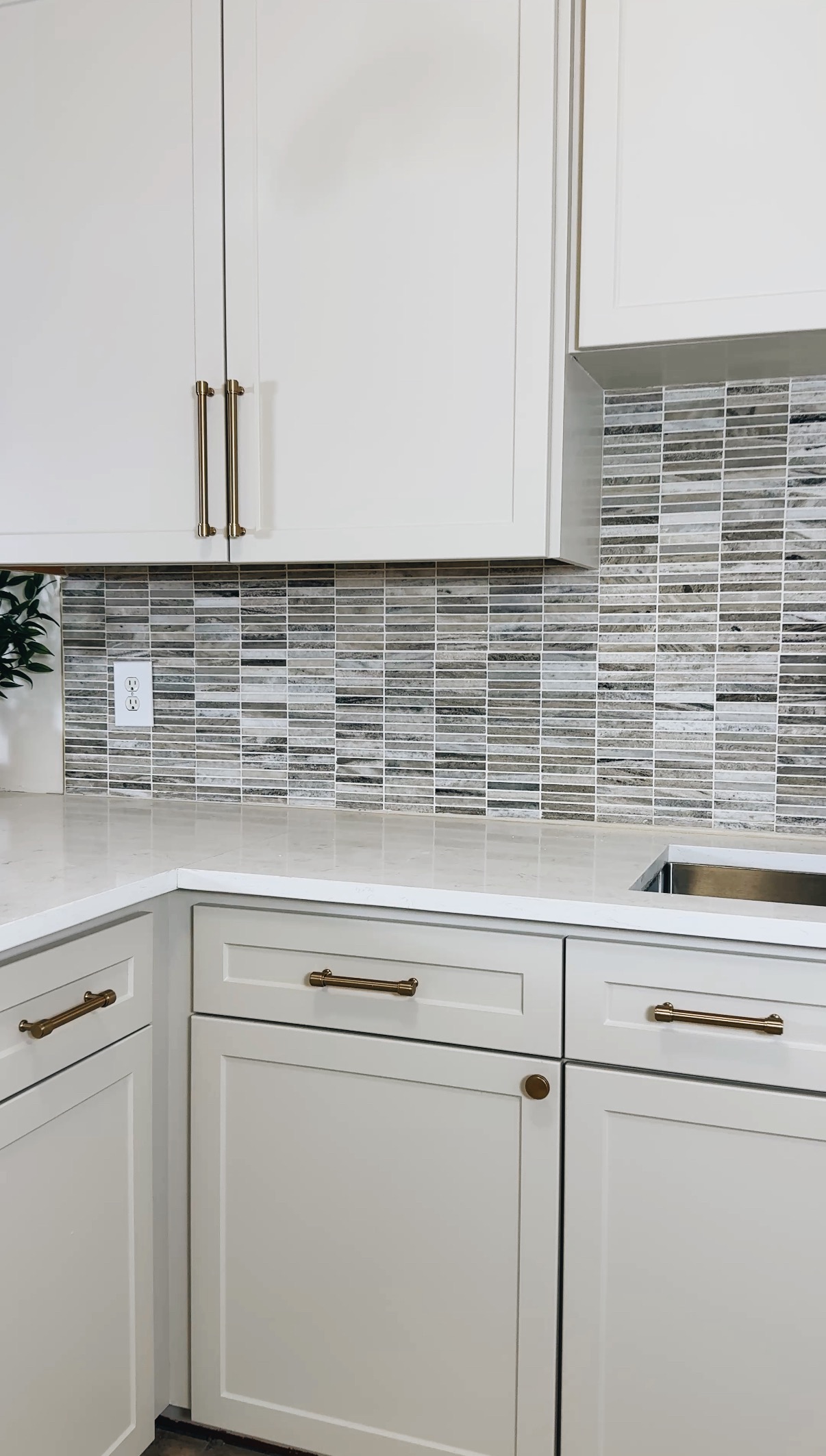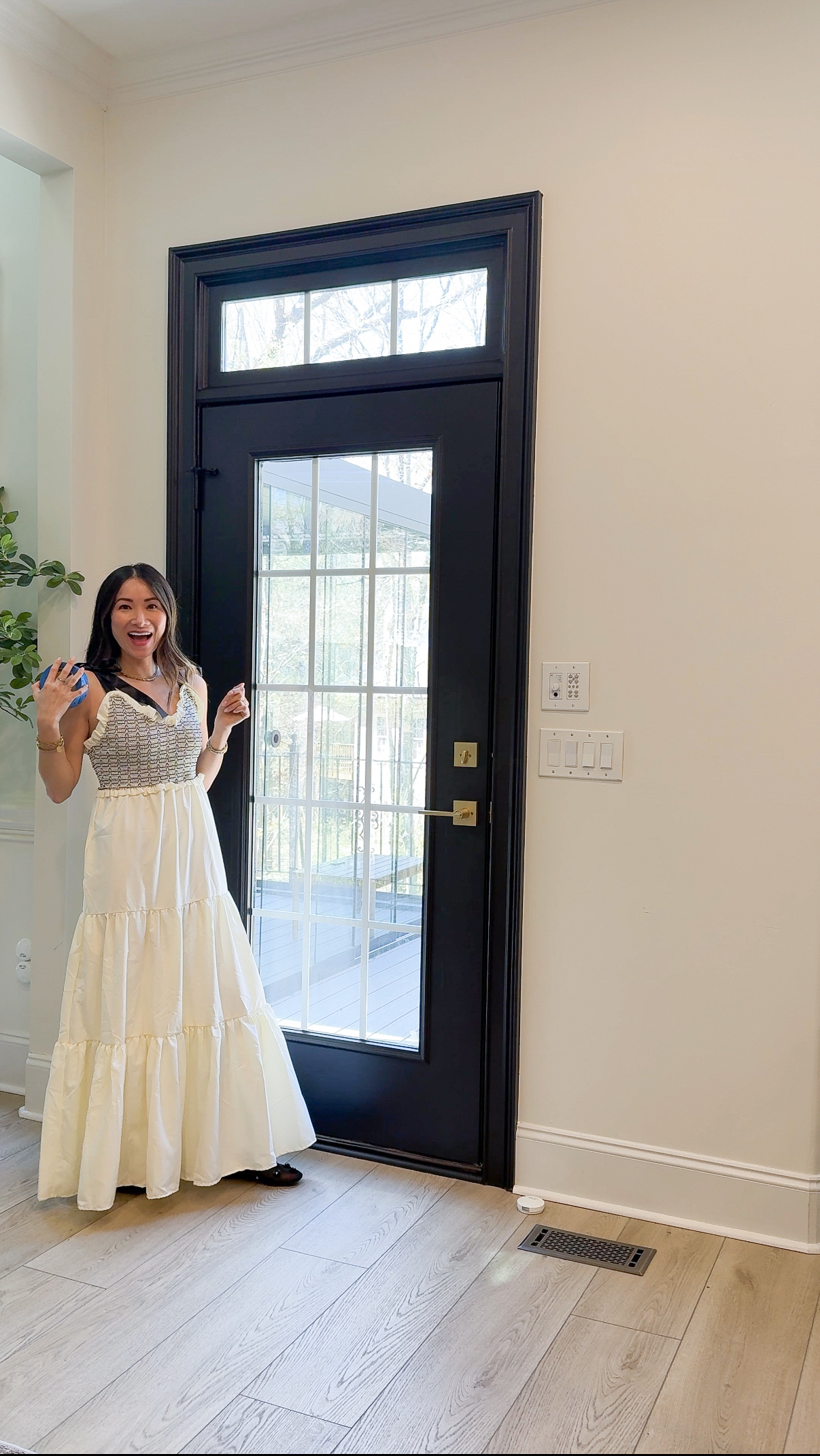Hi
I'm Bong
I'm just a girl who likes to DIY anything and everything. More than that, I love teaching people - especially women - how to pick up power tools and create the home of their dreams. Stop waiting for someone else and starting Doing It Yourself. I'll show you how!
diy projects
diy school
life hacks
categories
must have products
Welcome back. I hope you are ready to DIY! We will be talking all about caulking today. Caulk is used to seal up any gaps from putting two pieces of something together. For example, I will be caulking a board to my wall today. Caulk creates a meditation to make it look like one seamless piece when painting.
There are three different types of caulk.
However, I have never used one, so we are only talking about two different types of caulk today. The first kind is silicone caulk. You will need this for windows and bathrooms.
The second kind is latex which is used for almost all other applications. So, if you are doing board and batten, accent walls, baseboards, crown molding, etc., you will need latex caulk.
One thing I love about latex is that it comes in different colors. So, if you are doing a black wall, you can use black latex caulk to match your wall. I typically only buy white because I will leave it white or paint over the caulk. Since I usually paint it, I always ensure I get a paintable one, most are paintable, but some are not. My favorite brand of caulk is the DAP brand, this is the only brand I use, and I highly recommend it.
Caulk comes in two forms, either a squeezable (toothpaste-like) bottle or in a tube-shaped bottle. I always use the Tube Caulk because it is easier for me to maneuver.
So how do you work a tube of caulk and the gun?
All bottles of caulk come sealed so that it does not dry out, I bought 3 tubes for this project. You will also need something called a caulk gun and it comes in different sizes. Since I am using a 10 oz. tube my gun holds that size. All caulk guns are basically the same. They have options like non-drip but I have bought those and I swear they still drip. The gun will run you about $10 and the tubes of caulk are around $2.99 each.
On your gun, you will see a small hole on the side that says “spout cotter” you will use this to cut the tip of your caulk tube. All you will need to do is slide the tip of the tube into the hole, and when you release the trigger, it will cut off the end. You do not need to slide the tip in all the way. There are small numbers on the tip to show you how much you can cut off depending on how thick you need your caulk. I usually cut my tip about a quarter of an inch down, and I always cut it at an angle. Cutting it at an angle will go on the wall much smoother.
Now that the tip is cut off, you must remove the aluminum lid from the caulk. This lid is similar to one that would go on top of a medicine bottle or if you bought soap or lotion from the store. Next, you will see that on your Caulk Gun, there is a small poking stick that you can pull out. Then you will slide the stick into the tip of the tube and swivel it around to ensure the aluminum is removed.
Now it is time to insert your tube into the gun! You will see a ratcheting system on the back of your gun. You can push it in and pull it back. However, before pulling it back, you must ensure the handle at the end is angled down to “unlock” the lever and remove it back. Once pulled back, you and fit the tube inside your gun.Then it would be best to lock the handle by pushing it back up and forward to ensure the tube can make the caulk come out.
I have had a few people ask me what other kinds of tools they need to caulk, and to be honest, I have bought those tools, and I always end up using my finger to smooth it out anyways. So, do not waste your money; use your finger and a bag of baby wipes to wipe off any excess caulk.
Now we can use our caulk to work on our project! Today I will be caulking my board and batten in my home.
When we cut our tube, we cut an angle to caulk smoothly. So, when holding the tube to the wall, you must maintain that angle along the edge and squeeze the trigger slowly. You never want to squeeze too hard because a lot will come out. Once you have caulked your perimeter and are getting to the end, it is also important to release the trigger before the end. Usually, you will have more caulk come out so that it lays on nicely when the excess comes out. This can be one of the most frustrating parts of caulking because you will continue cleaning up the caulk you do not need.
After your line is complete, it might look bubbly. This is when you take your baby wipe and smooth it out by wiping it down.
Now that you have caulking down, I want to share a few more tips and tricks to ensure that you are a caulk expert.
First, I want to tell you about backer rods. Backer rods have a vast gap that caulk cannot cover entirely. You will insert this rod inside your opening and caulk over it so that your caulk does not seep into the crack. You can typically find this by the caulk; it comes in different sizes.
Next, I want to talk about what happens when you still have caulk left but want to save it. Caulk will dry out if you leave the tube open, so you must restrict airflow from getting inside the tube. I like to use cling wrap around the tip and wrap it around nicely and tight. Sometimes I will also use a Qtip inside the tub to restrict airflow. You can buy small lids for your caulk, but if you are like me and lose them often, I recommend these other home methods to save your caulk.
Now that I have shared my secrets about caulking with you, it is your turn to start caulking your DIY projects! Good luck!




